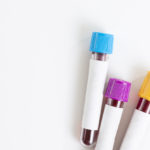About Fertility
Clomid Challenge Test and IVF Treatment

Ovarian reserve is a term referred by many infertility specialists to describe the size, quality and developmental potential of the eggs remaining in the ovary. As a woman ages ovarian reserve diminishes along with the chance of a chromosomal abnormal egg. Testing ovarian reserve is part of a fertility evaluation and has been assessed using many methods over the years including serum follicle-stimulation hormone (FSH) levels, antral follicle count, ovarian volume, menstrual cycle day 3 serum FSH and estradiol levels, and the clomiphene citrate challenge test. Here we will review the clomid challenge test and IVF treatment and why it may or may not be part of your infertility evaluation.
Clomid Challenge Test and IVF Treatment
Many patients 40 years of age and older will be asked to perform a clomiphene citrate challenge test (CCCT) as part of their evaluation. The original design of the test was to predict ovarian reserve and prognosis for future pregnancy. Most insurance companies now require an annual “passing” score on the CCCT to permit coverage for treatment cycles.
What is the Clomid Challenge Test?
The CCCT involves a cycle day 3 blood test measuring follicle stimulating hormone (FSH) and estrogen followed by two clomiphene pills per day (cycle days 5-9) and finally a repeat measurement of FSH on cycle day 10. A high FSH may indicate decreased ovarian reserve or fewer remaining quality eggs. Women 40-41 typically require an FSH < 15 on either cycle day 3 or 10 to pass the CCCT. Women 42 and older, dependent on their specific insurance provider, require an FSH < 12-15.
Is the Clomid Challenge Infertility Test Always Accurate?
Despite its requirement by many insurance companies, the CCCT is not absolutely predictive of ovarian reserve. It is a piece of the puzzle but not the only piece. A systematic review of 12 different CCCT medical studies report the sensitivity and specificity of the CCCT in predicting poor response varied significantly from 35% to 93% and 47% to 98%, respectively. If a test was absolutely predictive, it would have a sensitivity and specificity of 100%. An FSH value may also vary month to month in the same patient.
Understanding the Clomid Challenge Test and Your Fertility
In the patient with unexplained infertility, it can be diagnostically useful to assess by ultrasound the growth of ovarian follicles and endometrium at a time near ovulation. If that same patient is also taking clomiphene during the same evaluation, it may be difficult to assess whether the findings are indicative of a patient’s typical natural cycle or whether the findings are attributed to a side-effect of clomiphene.
As an example, clomiphene may thin the endometrium in some patients due to its anti-estrogenic effects. Is a thin endometrium due to prior scarring or is this a side-effect of the clomiphene in that cycle? Patients are made aware of its utility and well as its limitations.
Can You Get Pregnant With a Diminished Ovarian Reserve?
An abnormal test result may suggest decreased probability of success, but does not absolutely predict failure. Ovarian reserve testing does provide important information, but age and previous fertility or response to gonadotropin therapy (FSH, LH, hMG stimulation) have greater relevance and predictive value. Women with mildly abnormal results may have a lower fertility potential but they are not sterile. Therefore like all test results they should be interpreted, explained, and applied with caution, sensitivity and compassion.
Contact Us
If you would like to learn more about testing ovarian reserve and your fertility, please contact us for a consultation!


